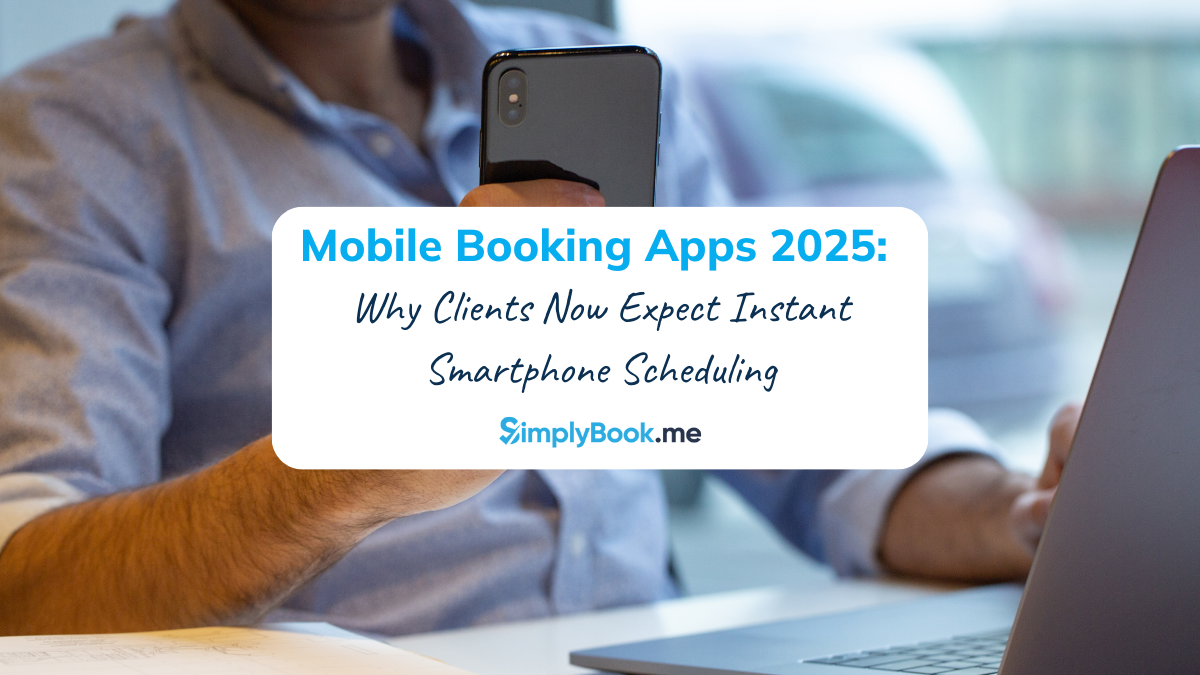Why Automated Scheduling Systems Are Essential for Scaling Your Business Globally

I. Introduction: Scaling Isn’t Just Growth—It’s Complexity
At the enterprise level, growth isn’t just about doing more—it’s about managing more. More locations. More employees. More time zones. More roles. More risk.
For companies expanding across borders, coordinating daily operations becomes increasingly complex. A single scheduling misstep—whether it’s a missed client call in London, an overbooked technician in Singapore, or a no-show demo in San Francisco—can create ripple effects across continents. What once worked for a 10-person team in one city becomes a logistical nightmare when applied to a global operation.
Manual scheduling systems, spreadsheets, and disconnected calendars simply don’t scale. They break down under the pressure of increased volume and complexity. Mistakes creep in. People get overbooked or underutilized. Clients and employees alike become frustrated. And growth stalls—not because of poor strategy, but because of operational inefficiency.
That’s where an automated scheduling system becomes essential. It’s not just about convenience—it’s about control. Automation empowers enterprises to manage complex, high-volume scheduling needs with real-time coordination, intelligent logic, and seamless integration. Whether you’re running field teams, call centers, remote operations, or in-person services across multiple countries, an automated scheduling system transforms chaos into cohesion.
As your business scales, your scheduling infrastructure needs to scale faster—and smarter.
II. What Is an Automated Scheduling System (and Why Enterprises Need One)
At its core, an automated scheduling system is software that streamlines and optimizes the scheduling process through intelligent automation. Rather than relying on human coordination or disconnected tools, these systems use logic-based engines, real-time data, and integration capabilities to manage complex calendars across people, locations, and services.
Key Features of an Enterprise-Grade Automated Scheduling System
- Real-time scheduling and availability tracking.
- Automated conflict detection and resolution.
- Role- and skill-based scheduling logic.
- Time zone-aware coordination.
- Self-service portals for internal and external users.
- Integration with CRM, HR, payroll, and communications platforms.
- Mobile accessibility and multi-device sync.
- Analytics and forecasting dashboards for operations and HR leaders.
The system functions as a centralized hub that ensures everyone—across departments, teams, or continents—is aligned, informed, and operating on a shared reality.
Enterprise-Specific Use Cases: Built for Global Complexity
An automated scheduling system isn’t just a smarter calendar—it’s a strategic operations tool. Here’s how enterprises use it:
- Multi-location management: Coordinate services and staff across offices, warehouses, or clinics around the world
- Multi-time-zone logic: Book appointments and assign shifts across regions without time zone confusion or overlaps
- Multi-role visibility: Customize calendar access by role—executives, field reps, HR managers, or client-facing teams only see what they need
Whether you’re onboarding hundreds of new employees in different cities or managing thousands of client appointments globally, the system scales with you—not against you.
Scaling Without Breaking
One of the biggest advantages of enterprise-ready automated scheduling is that it doesn’t buckle under growth. In fact, it thrives on it.
As you expand, these systems:
- Automatically adjust to new locations and team structures
- Handle high volumes of appointments or shift planning without downtime
- Leverage historical data to continuously improve scheduling efficiency
You don’t need to rebuild your operations from scratch every time you add a new market or team—you simply configure the system and let it run. That’s the kind of scalability today’s global businesses can’t afford to ignore.
III. Time Efficiency and Operational Productivity
In a global enterprise, time isn’t just money—it’s momentum. Every minute spent manually coordinating schedules, resolving conflicts, or chasing availability is time not spent on scaling, innovating, or closing deals. That’s why enterprises are increasingly turning to automated scheduling systems—not just for convenience, but for strategic time reclamation.
Cutting Out the Back-and-Forth
Traditional scheduling often involves a dizzying chain of emails, spreadsheets, messages, and meetings just to get a team aligned or a client booked. Multiply that by hundreds or thousands of appointments across departments or countries, and you get an operational bottleneck.
An automated scheduling system eliminates the tedious back-and-forth by:
- Letting staff and clients self-schedule through real-time portals
- Syncing with internal calendars to avoid conflicts
- Sending automatic confirmations, reminders, and updates
- Suggesting optimal time slots based on team availability and workload
No more manual checking. No more miscommunication. Just smooth, frictionless scheduling that runs in the background while your team gets on with higher-value tasks.
Reallocating Time to Growth
When your operations team is no longer bogged down by scheduling logistics, that time can be strategically reallocated.
- Sales teams can focus on pipeline expansion instead of coordinating demos
- HR can zero in on recruiting or onboarding instead of managing shift rotations
- Operations leaders can optimize resources and forecast demand
This shift in focus—from reactive to proactive—is what allows companies to scale without constantly hiring more coordinators or increasing admin overhead.
Case Insight: Time Saved = Scaled Faster
According to data from TIMIFY and Clockwise, enterprises that implemented automated scheduling systems reported:
- Up to 40% less time spent on manual scheduling-related tasks
- 25% improvement in meeting or appointment confirmation rates
- 30–50% reduction in rescheduling or missed appointments
That reclaimed time directly fuels productivity, team morale, and long-term scalability.
IV. Precision, Compliance, and Global Coordination
As your business expands globally, operational missteps become more expensive—and more visible. Scheduling mistakes that once caused minor friction at the local level can snowball into major disruptions when spread across multiple countries, cultures, and compliance environments.
That’s where the true strength of an automated scheduling system lies: precision and consistency at scale.
No More Costly Mistakes
Double-bookings. Overlapping shifts. Missed appointments. These aren’t just annoying—they’re costly.
- A double-booked field technician delays project delivery.
- A missed healthcare consultation causes a regulatory issue.
- An overworked employee across time zones burns out and quits.
Automated scheduling systems are designed to eliminate these risks by:
- Instantly flagging and preventing scheduling conflicts
- Locking out unavailable time slots automatically
- Providing real-time calendar visibility to all stakeholders
This ensures that global coordination doesn’t lead to global confusion.
Built-In Compliance Across Borders
Each country (and sometimes each region) has its own rules about labor laws, data privacy, and working hours. Whether it’s GDPR in Europe, HIPAA in the U.S., or mandatory rest hours in APAC, non-compliance can lead to hefty fines and reputational damage.
An enterprise-ready automated scheduling system can be configured to:
- Respect local labor regulations (e.g., max working hours, overtime rules)
- Handle privacy requirements for personal data
- Securely store scheduling history for audits and accountability
Instead of asking your team to manually juggle compliance, your system does it by design.
Real-Time Syncing for Distributed Teams
Global teams need a single source of truth. Automated scheduling platforms provide this through:
- Centralized dashboards showing appointment status across regions
- Live updates that reflect changes across all synced devices instantly
- Role-specific views so each team member sees only what’s relevant to them
For distributed teams, this kind of alignment is essential. It ensures operations stay smooth, no matter the time zone, department, or office location.
Ultimately, automation isn’t just about faster scheduling—it’s about error-proof scheduling that aligns with global standards, adapts to local nuances, and scales with confidence.
V. Empowering Teams with 24/7 Access and Fair Scheduling
Scaling a global business isn’t just about managing operations—it’s about supporting the people who power them. Enterprise teams are more distributed than ever, spanning time zones, languages, and work cultures. To keep them aligned and motivated, scheduling needs to be transparent, flexible, and fair.
An automated scheduling system enables this by giving employees agency over their schedules—without burdening managers with constant coordination.
Autonomy Through Self-Service Tools
Modern scheduling platforms offer self-service portals where employees can:
- View their upcoming shifts or appointments
- Request time off or availability changes
- Swap shifts with eligible coworkers
- Accept or decline open slots based on workload or location
These features are often available via mobile app, ensuring 24/7 access from anywhere in the world. Whether a nurse in Berlin or a customer support rep in Manila, everyone can engage with the system in real-time.
This level of control enhances trust, reduces miscommunication, and encourages accountability. Employees no longer need to chase down a supervisor just to adjust their hours—they’re empowered to manage their own time within defined parameters.
Retention Through Scheduling Fairness
Fairness isn’t a luxury—it’s a retention strategy. High-performing employees burn out quickly when schedules feel inconsistent, inequitable, or misaligned with their personal lives.
Automated scheduling systems can be configured to:
- Distribute shifts equitably
- Rotate undesirable time slots fairly
- Respect local holidays and cultural norms
- Adapt to regional labor protections and rest-period rules
The result? A team that feels valued, heard, and supported.
Example: Location-Aware Fairness in Action
Consider a multinational logistics company with warehouse teams in Brazil, India, and Germany. Each location has different working hour regulations, peak periods, and team sizes.
With SimplyBook.me’s enterprise scheduling system:
- The India team receives automated shift suggestions that avoid local holidays.
- The German team’s schedule respects EU labor hour caps.
- The Brazilian team gets earlier access to weekend shifts due to their unique delivery cycle.
Managers don’t need to manually coordinate these nuances—the system handles them automatically, resulting in smoother operations and a happier workforce.
Fair scheduling at scale doesn’t just improve morale—it increases retention and performance across the board.
VI. Integration and Intelligence: Smarter Scheduling Through Data
For enterprise operations, scheduling is not an isolated task. It intersects with payroll, compliance, project delivery, and even customer satisfaction. That’s why smart companies don’t just automate scheduling—they integrate it into their entire tech stack.
A modern automated scheduling system acts as a hub, syncing with your core business platforms to drive more efficient, intelligent operations.
Seamless Integration with Enterprise Tools
Scheduling systems can connect to:
- CRMs (e.g., Salesforce, HubSpot) to trigger client appointments based on sales or support stages
- HR software (e.g., BambooHR, Workday) to sync employee data, time-off, and onboarding
- Payroll systems to ensure hours worked = hours paid, with fewer errors
- Project management tools (e.g., Asana, Jira, Monday.com) to align scheduling with deadlines and milestones
This real-time synchronization eliminates silos. Your systems speak the same language. Your teams act on the same data.
Forecasting with Data, Not Guesswork
One of the most powerful advantages of enterprise scheduling automation is the ability to learn from the past. These platforms analyze:
- Historical booking patterns
- Employee availability trends
- Peak customer interaction times
- Service delivery durations
Armed with this data, the system can predict:
- When to staff up or down
- Which roles will be in highest demand
- Where potential conflicts may arise
This makes your scheduling not just reactive, but proactive.
Real-Time Insights for Strategic Planning
Most enterprise-ready platforms include analytics dashboards that let you:
- Track attendance, punctuality, and fulfillment rates across regions
- Identify underperforming departments or overbooked teams
- Benchmark locations based on scheduling efficiency or resource utilization
For operations managers, HR leads, or executive decision-makers, this visibility is game-changing. It allows leadership to make informed choices—on staffing, training, and even expansion—based on hard data, not intuition.
With the right automated scheduling system, every calendar entry becomes a data point. Every time slot becomes an opportunity for insight.
VII. Skill-Based and Role-Aware Scheduling
As businesses scale globally, it’s not enough to simply have “someone” available—you need the right person in the right place at the right time. Whether it’s matching a specialist nurse to a patient, a certified technician to a client’s equipment, or a multilingual agent to an international customer, skill-based scheduling is essential.
That’s where a robust automated scheduling system proves invaluable. These platforms go beyond basic availability and match employees to appointments or shifts based on predefined attributes—certifications, training levels, languages spoken, job roles, or even soft skills.
Precision Scheduling That Protects Your Brand
In industries where expertise directly impacts outcomes—like healthcare, IT, or logistics—assigning the wrong employee to a job isn’t just inefficient; it’s risky.
An enterprise-grade scheduling system ensures that:
- Only employees with required qualifications or credentials are scheduled for specific roles
- Certifications (e.g., CPR, ISO compliance, security clearance) are tracked and validated
- Team members with local language skills or regional knowledge are prioritized for relevant shifts
This reduces operational errors, improves service quality, and ensures regulatory compliance—especially in high-stakes industries.
Use Case: High-Skill Work, Global Impact
Imagine a global IT services firm offering 24/7 support to enterprise clients. A critical outage occurs at a client site in Tokyo, requiring a technician with:
- Network security certification
- Fluency in Japanese
- Availability within the next 3 hours
Instead of a frantic series of emails and messages, the automated scheduling system instantly filters the talent pool and identifies the ideal staff member who meets all criteria. It assigns them, sends a notification, and updates the calendar—automatically.
This is scheduling logic with business logic built in.
Industries That Rely on Skill-Based Scheduling
- Healthcare: Assign nurses, physicians, or home care providers based on specialty and licensing
- Tech Support & Field Services: Match technicians based on hardware expertise, location, and compliance
- Logistics & Warehousing: Schedule staff with forklift certification or inventory management experience
Reducing Risk, Elevating Quality
By aligning scheduling with qualifications, enterprises can:
- Prevent service errors and delays
- Protect customer satisfaction and contractual SLAs
- Comply with safety, legal, and professional standards
When your global workforce is scheduled based on what they can do, not just when they’re free, you turn scheduling into a strategic lever for quality and growth.
VIII. Conclusion: Automation Is the Backbone of Scalable Global Operations
Scaling a business across borders, time zones, and teams isn’t just about expansion—it’s about building a foundation that can sustain complexity without collapsing under it. Manual processes, no matter how carefully managed, simply can’t keep up with the speed and scope of global growth.
An automated scheduling system is not just a helpful tool—it’s the operational backbone that supports everything from staffing to service delivery across geographies. It brings:
- Scale, by effortlessly managing thousands of appointments, employees, and regions
- Accuracy, by preventing costly mistakes and aligning schedules with real-world constraints
- Agility, by adapting to demand shifts, compliance requirements, and market-specific needs in real time
It improves productivity, boosts retention, reduces administrative overhead, and ensures that the right person is always in the right place—at the right time.
From healthcare and tech to logistics and professional services, enterprises around the world are using scheduling automation not just to operate more smoothly, but to strategically outpace their competitors.
If your business is growing—or plans to—there’s no room for fragmented workflows or outdated systems. The future belongs to those who can coordinate at scale, with precision and speed.
👉 Discover how SimplyBook.me supports enterprise growth with an automated scheduling system built for global business.
Your operations deserve more than survival—they deserve intelligent, scalable success.
_________________________________________________________________________________
FAQ: Automated Scheduling Systems
1. What is an automated scheduling system?
An automated scheduling system is software that uses predefined logic, real-time data, and integrations to create, assign, and optimize appointments or shifts without manual intervention. It’s used across industries to manage complex schedules efficiently.
2. Can AI really handle my rota or shift schedule?
Yes. AI-powered scheduling tools can automate rota creation by analyzing availability, roles, skills, and legal requirements—reducing human error and saving admin time. Some systems even allow employees to self-manage shift swaps and preferences.
3. How do I create an automated schedule?
Using platforms like SimplyBook.me, you can set rules for availability, services, staffing, and locations. The system then automatically generates schedules, books clients, and sends reminders—all while adapting to real-time changes.
4. Is there an automatic schedule maker?
Absolutely. Many platforms, including SimplyBook.me, offer automatic scheduling capabilities with built-in conflict resolution, team coordination, and integrations with calendar tools like Google Calendar and Outlook.
5. What’s the difference between automatic and autonomous scheduling?
Automatic scheduling follows pre-set rules. Autonomous scheduling uses AI or machine learning to improve over time, making decisions based on behavior, preferences, and historical data—offering more flexibility and optimization at scale.



Comments
0 commentsNo comments yet